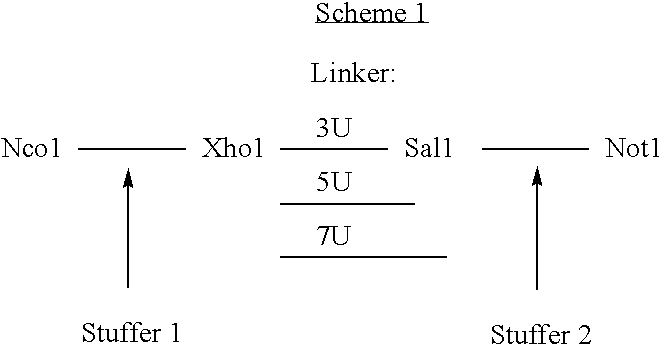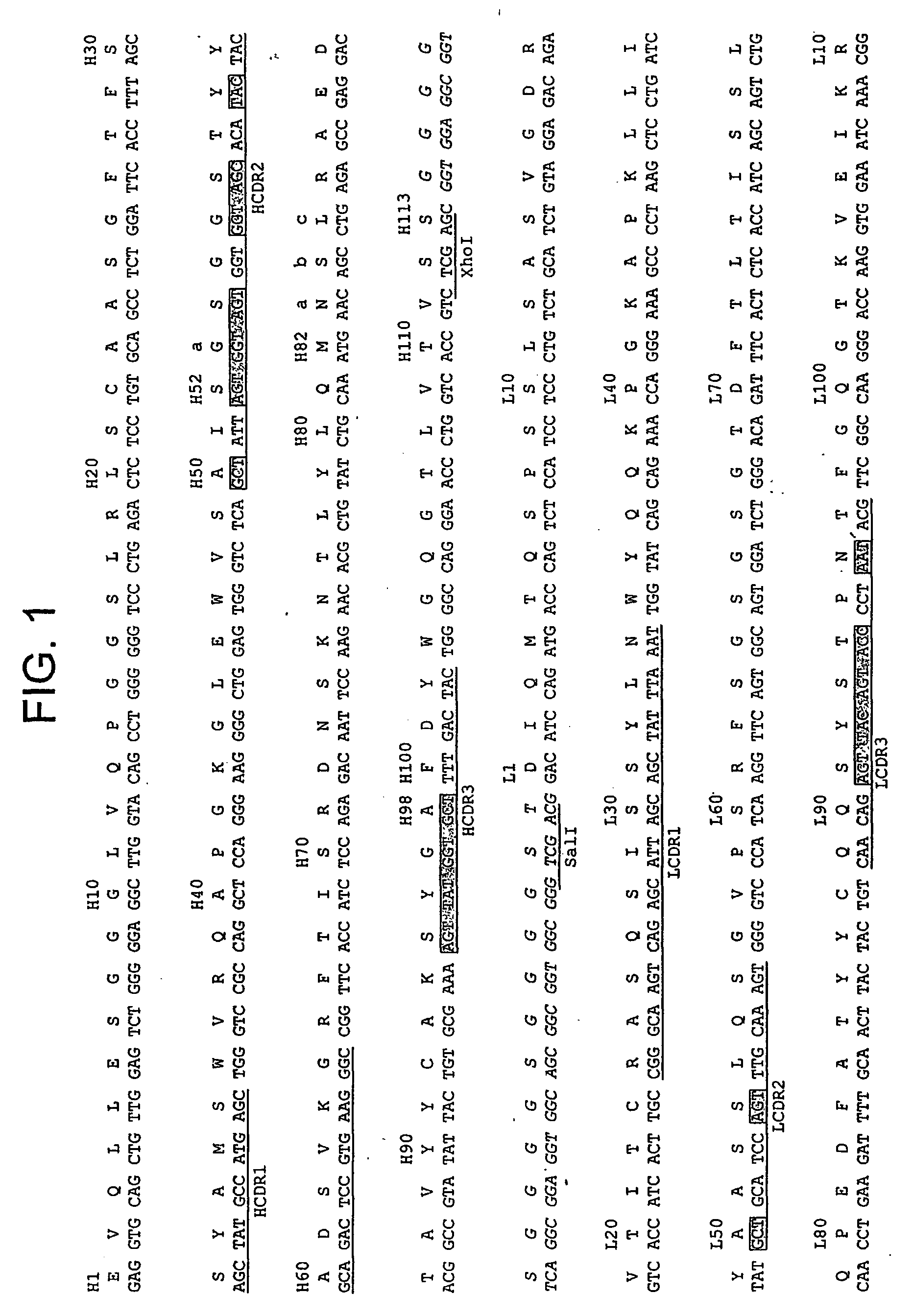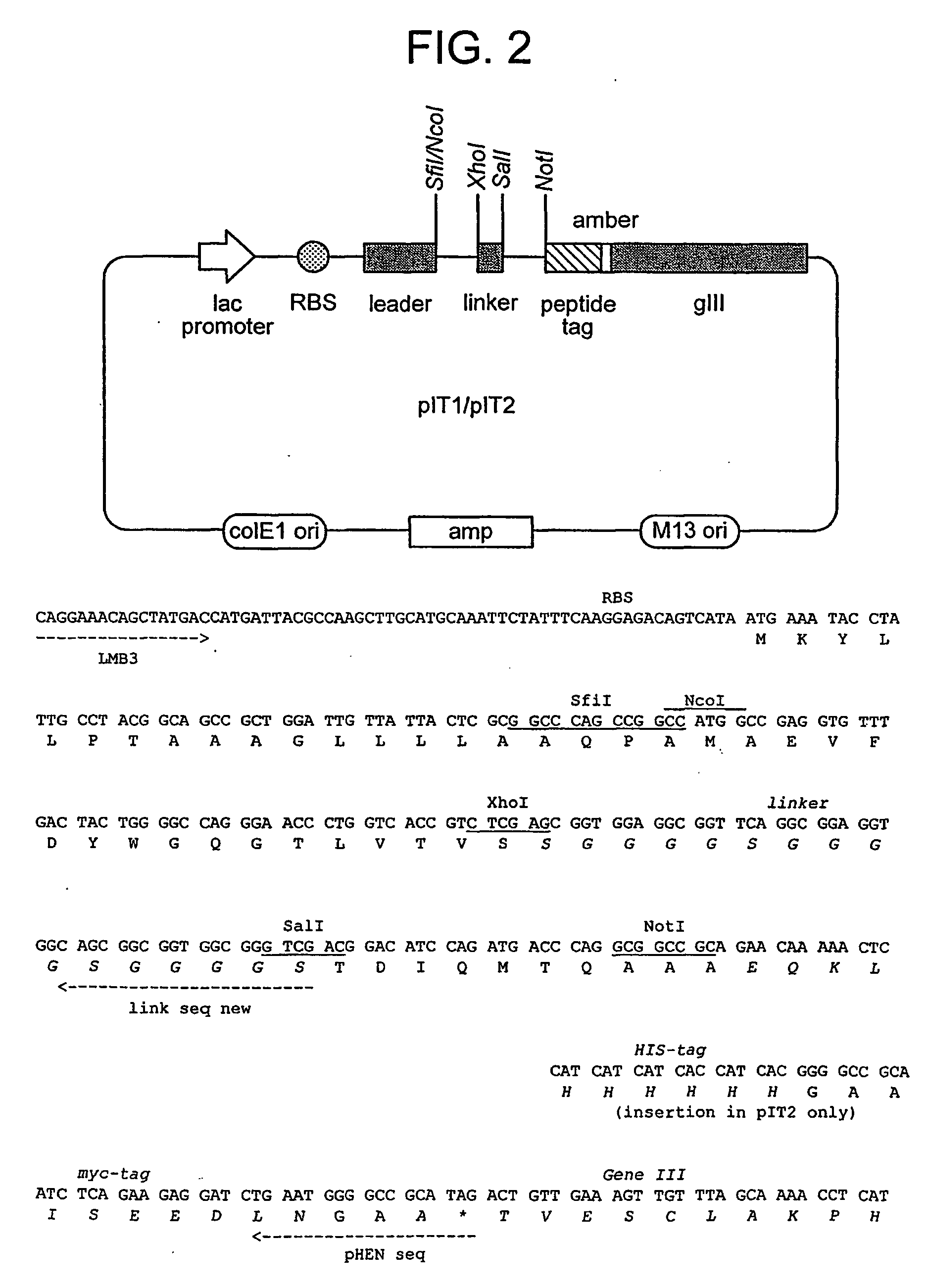Ligand
a ligand and specific technology, applied in the field of ligands, can solve the problems of bispecific igg fraction, inability to control the ratio of binding sites to each antigen or epitope in the assembled molecule, and single domains have a very short in vivo half-li
- Summary
- Abstract
- Description
- Claims
- Application Information
AI Technical Summary
Benefits of technology
Problems solved by technology
Method used
Image
Examples
example 1
Selection of a Dual Specific scFv Antibody (K8) Directed Against Human Serum Albumin (HSA) and β-Galactosidase (β-Gal)
[0441] This example explains a method for making a dual specific antibody directed against β-gal and HSA in which a repertoire of Vκ variable domains linked to a germline (dummy) VH domain is selected for binding to β-gal and a repertoire of VH variable domains linked to a germline (dummy) Vκ domain is selected for binding to HSA. The selected variable VH HSA and Vκβ-gal domains are then combined and the antibodies selected for binding to β-gal and HSA. HSA is a half-life increasing protein found in human blood.
[0442] Four human phage antibody libraries were used in this experiment.
Library 1Germline Vκ / DVT VH8.46 × 107Library 2Germline Vκ / NNK VH9.64 × 107Library 3Germline VH / DVT Vκ1.47 × 108Library 4Germline VH / NNK Vκ1.45 × 108
[0443] All libraries are based on a single human framework for VH (V3-23 / DP47 and JH4b) and Vκ (O12 / O2 / DPK9 and Jκ1) with side chain diver...
example 2
Characterisation of the Binding Properties of the K8 Antibody
[0449] Firstly, the binding properties of the K8 antibody were characterised by the monoclonal phage ELISA-A 96-well plate was coated with 100 μl of HSA and β-gal alongside with alkaline phosphatase (APS), bovine serum albumin (BSA), peanut agglutinin, lysozyme and cytochrome c (to check for cross-reactivity) at 10 μg / ml concentration in PBS overnight at 4° C. The phagemid from K8 clone was rescued with KM13 as described by Harrison et al., (1996) and the supernatant (50 μl) containing phage assayed directly. A standard ELISA protocol was followed (Hoogenboom et al., 1991) using detection of bound phage with anti-M13-HRP conjugate. The dual specific K8 antibody was found to bind to HSA and β-gal when displayed on the surface of the phage with absorbance signals greater than 1.0 (FIG. 4). Strong binding to BSA was also observed (FIG. 4). Since HSA and BSA are 76% homologous on the amino acid level, it is not surprising tha...
example 3
Selection of Single VH Domain Antibodies Antigens A and B and Single Vκ Domain Antibodies Directed Against Antigens C and D
[0453] This example describes a method for making single VH domain antibodies directed against antigens A and B and single Vκ domain antibodies directed against antigens C and D by selecting repertoires of virgin single antibody variable domains for binding to these antigens in the absence of the complementary variable domains.
[0454] Selections and characterisation of the binding clones is performed as described previously (see Example 5, PCT / GB 02 / 003014). Four clones are chosen for further work: [0455] VH1—Anti A VH [0456] VH2—Anti B VH [0457] VK1—Anti C Vκ[0458] VK2—Anti D Vκ
[0459] The procedures described above in Examples 1-3 may be used, in a similar manner as that described, to produce dimer molecules comprising combinations of VH domains (i.e., VH-VH ligands) and combinations of VL domains (VL-VL ligands).
PUM
 Login to View More
Login to View More Abstract
Description
Claims
Application Information
 Login to View More
Login to View More - R&D
- Intellectual Property
- Life Sciences
- Materials
- Tech Scout
- Unparalleled Data Quality
- Higher Quality Content
- 60% Fewer Hallucinations
Browse by: Latest US Patents, China's latest patents, Technical Efficacy Thesaurus, Application Domain, Technology Topic, Popular Technical Reports.
© 2025 PatSnap. All rights reserved.Legal|Privacy policy|Modern Slavery Act Transparency Statement|Sitemap|About US| Contact US: help@patsnap.com



